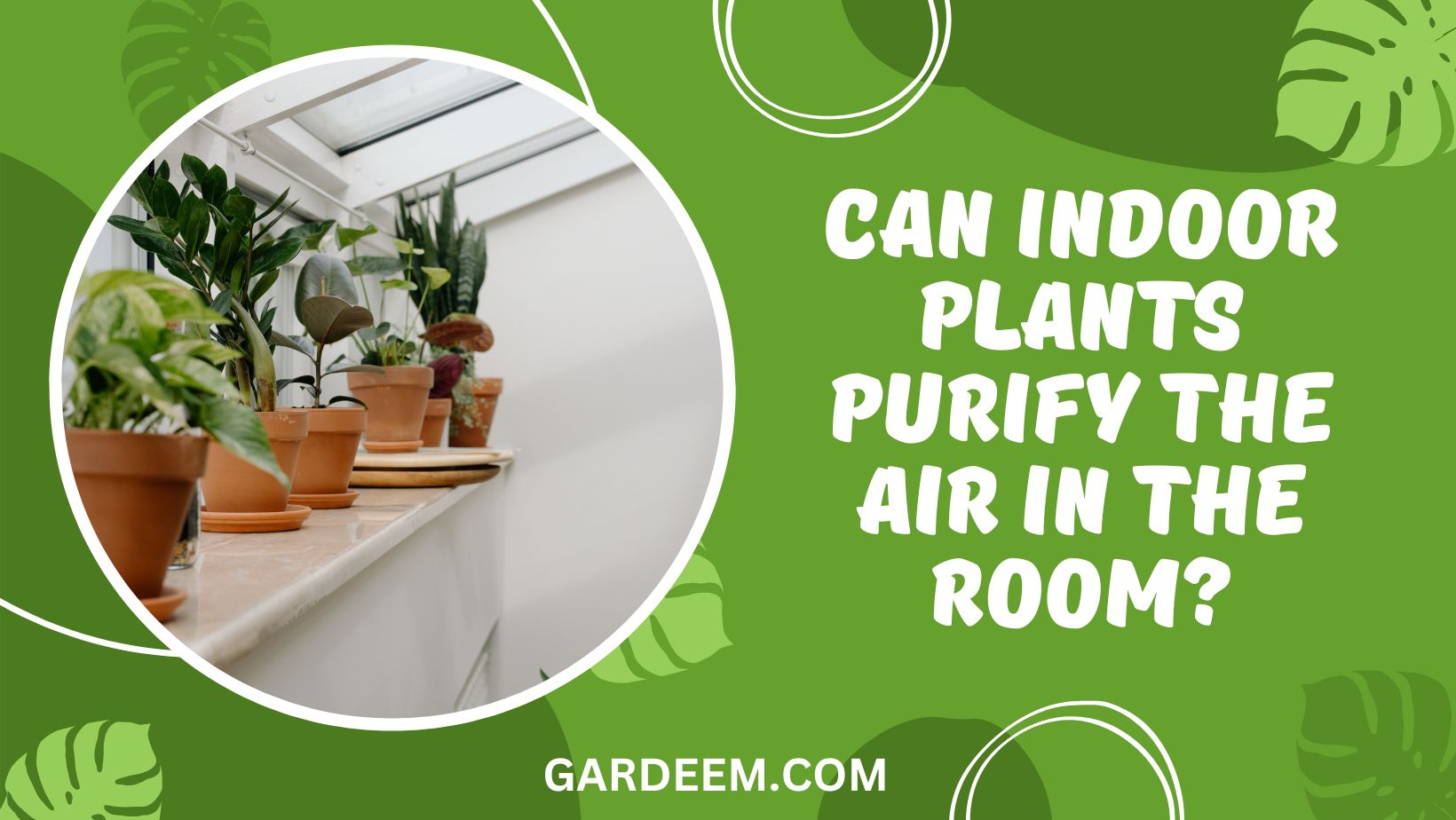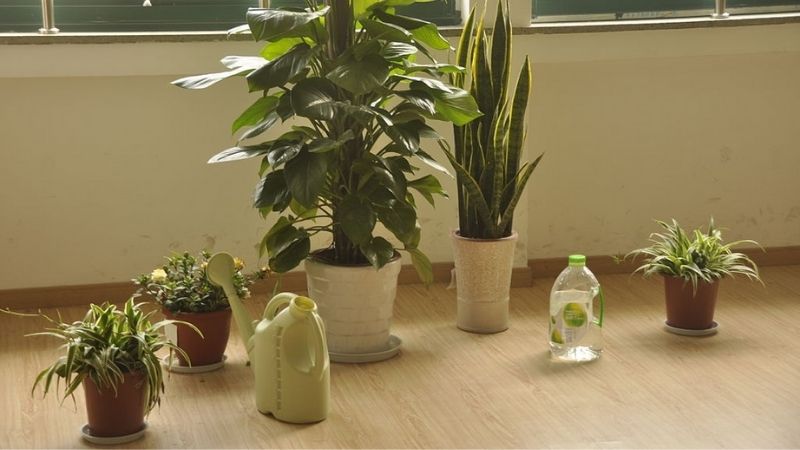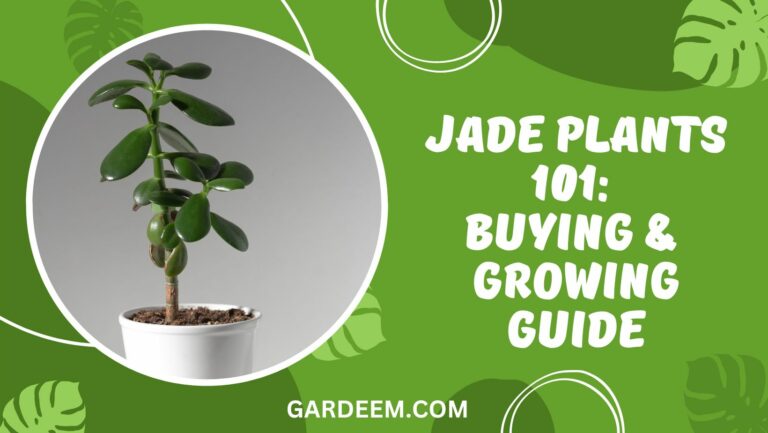
You’ve probably heard about the benefits of houseplants and indoor pollution time and time again and now you might be wondering – how can indoor plants purify the air in the room? While it’s certainly true that houseplants can purify the air in your home, it’s not quite as simple as people may have you believe.
In this post, we’re going to take a look at can indoor plants purify the air in the room and separate the facts from fiction.

A Note On Air Purity
The average person spends 90% of their lives indoors and it’s been found that poor air quality can lead to coughs, eye irritation, headaches, and even respiratory illnesses such as asthma.
This study by Environmental Protection Agency (EPA) studies of human exposure to air pollutants indicate that indoor levels of pollutants may be two to five times – and occasionally more than 100 times – higher than outdoor levels.
For employers, good air quality is particularly important with a 2015 collaborative study by Harvard T.H. Chan School of Public Health, SUNY Upstate Medical University and Syracuse University, finding that people who work in well-ventilated offices have significantly higher cognitive function scores when responding to a crisis or developing a strategy.
In other words, good air quality leads to happier and more productive workers with the study finding that those experiment participants who worked in the green environment scored on average twice as high in cognitive performance tests as those who worked in a regular office environment.
Can Indoor Plants Purify The Air In The Room?
When most people talk about the benefits plants make to purifying the air, they’re probably basing their opinion on the findings from a well known 1989 Nasa experiment that found the plants used in the study were able to reduce the amount of benzene, trichloroethylene, and formaldehyde in the environment.
The study also found that the best indoor plant for removing impurities from the environment was the Dragon Tree (Dracaena marginata) and that plant roots and microorganisms play a major part in the chemical removal.
Finally, based on the research it’s unlikely that a few houseplants would be able to remove sufficient pollutants to have many benefits to humans.
Indoor plants not only add a touch of natural beauty to our living spaces but also have the potential to improve the air quality. The concept that certain indoor plants can purify the air by removing harmful pollutants has gained significant attention. Let’s explore whether indoor plants can indeed help purify the air in the room and contribute to a healthier indoor environment.
Air Purifying Abilities
Research suggests that certain indoor plants have the ability to absorb and remove pollutants from the air. Plants accomplish this through a process called phytoremediation, in which they take in airborne contaminants through their leaves and roots. These contaminants can include volatile organic compounds (VOCs) such as formaldehyde, benzene, and xylene, which are commonly found in indoor environments due to factors like furniture, paint, and cleaning products.
Types of Air-Purifying Plants
Several types of indoor plants are known for their air-purifying qualities. Some popular examples include:
- Snake Plant (Sansevieria): This plant is known for its ability to absorb formaldehyde, nitrogen oxide, and benzene.
- Peace Lily (Spathiphyllum): Peace lilies are effective in reducing levels of several indoor air pollutants, including formaldehyde, benzene, and xylene.
- Spider Plant (Chlorophytum comosum): Spider plants can help filter out harmful pollutants like formaldehyde and xylene.
- Aloe Vera (Aloe barbadensis): Aloe vera is known for its air-purifying qualities, particularly in removing formaldehyde.
- English Ivy (Hedera helix): English ivy has been shown to reduce airborne mold spores and certain VOCs like formaldehyde.
These are just a few examples, and there are other plants known for their air-purifying abilities as well.
Limitations of Indoor Plants as Air Purifiers
While indoor plants can play a role in improving indoor air quality, it’s important to understand their limitations. Here are a few points to consider:
- Effectiveness: While certain plants have been shown to remove specific pollutants from the air, their effectiveness in purifying the overall air quality of a room may be limited. The air-purifying ability of plants depends on factors such as the plant species, size, and the overall air volume in the room.
- Concentration of Pollutants: Indoor plants may have a more significant impact on reducing low concentrations of pollutants rather than high levels. For areas with significant pollutant sources or poor ventilation, relying solely on indoor plants may not be sufficient to achieve optimal air quality.
- Maintenance: To maximize the air-purifying potential of indoor plants, proper care and maintenance are crucial. Regular watering, appropriate lighting, and dusting the leaves are essential to keep the plants healthy and active in their pollutant removal process.
- Other Air Quality Measures: While indoor plants can contribute to air purification, they should be seen as part of a broader approach to improving indoor air quality. Adequate ventilation, minimizing pollutant sources, using air purifiers, and keeping the living space clean are all important factors to consider.
Psychological and Aesthetic Benefits
Regardless of the extent to which indoor plants purify the air, they offer additional psychological and aesthetic benefits. Being surrounded by greenery and nature-like elements can contribute to a sense of well-being, reduce stress, and improve mood. Indoor plants also add beauty and natural aesthetics to the living space, enhancing the overall ambiance.
The Bottom Line
Can indoor plants purify the air in the room? While most studies have found that houseplants can certainly help purify the air, the level in which they’re able to do this isn’t sufficient to have any meaningful difference on the air quality inside most rooms.




